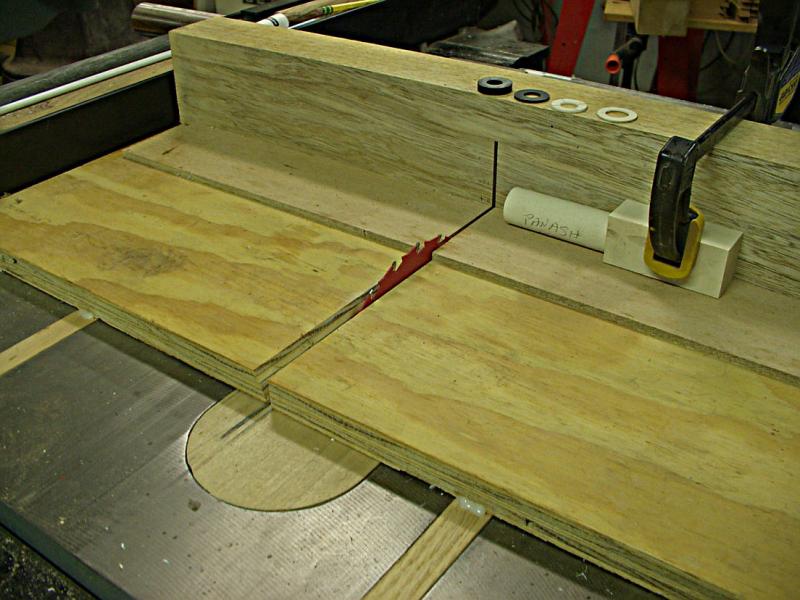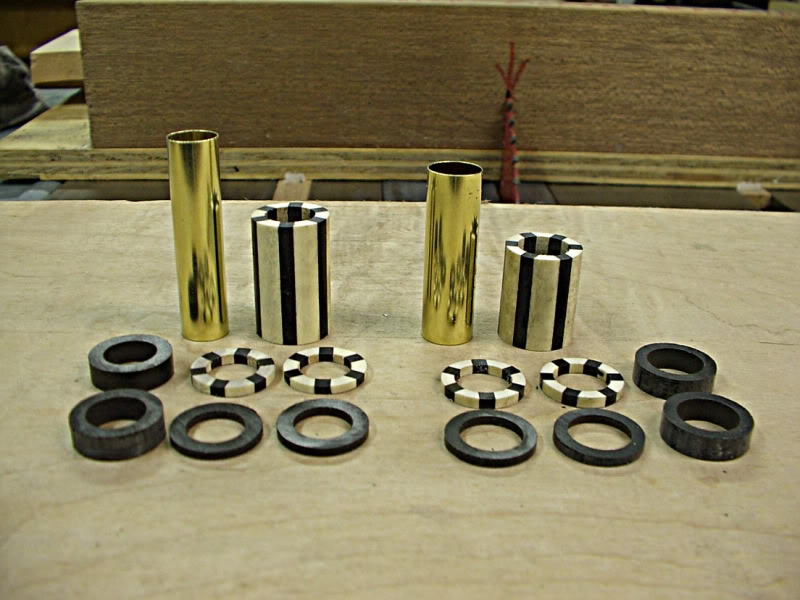I think I know what you are trying to do, Harold. You want to glue a blank of the blue field with stars to a piece of stripes to make a blank like this one at PSI:
Bald Eagle Insignia Flag Bolt Action Antique Pewter Pen Kit at Penn State Industries
I have done these a couple of ways (note: I use thick CA):
1. Cut a stars piece about 1/8-inch longer than 1/3 of the tube length and the stripes 1/8-inch longer than the remainder of the tube. You do need to get a good straight and square cut on both pieces on the ends that you will be joining together. Percentage of blue to stripes is up to you - I think the 1/3 blue to 2/3 stripes looks good to me but use what looks good to you - it doesn't make any difference.
2. Drill the blanks. Since the blanks are not the same size (at least the ones I got the blue were about 1/16-1/8 inch smaller than the stripes) it helps to insure you are drilling the centers on both.
3. Mark a pencil line around the tube where the blanks will join to each other. Put CA inside the short blank and insert the tube to the line - and give it a few minutes for the CA to setup. Then apply CA to the other end of the tube and on the end of the blank where the two will join and slide on the other blank. I put a clamp on the ends to make sure the joint is pressed tight.
The other way I have done them is to simply cut my blanks and CA glue the two together trying to center the smaller blank on the larger blank and put on a clamp to press the two together until the CA sets up. When I drill I put the larger size blank in the vise/drilling chuck and drill from the small blank end. I find that the slight difference in blank sizes isn't really that big of a deal to just eyeball it and glue the ends together before drilling. It's a lot faster and I've had no problem with the glue line breaking on me.
One other thing I have found is that the blue is translucent enough that you will want to paint the inside of the blank white. This works better than painting the tube white because it prevents the glue on the tube from showing thru.
Anyway, that's how I do these. Hope this helps you.


